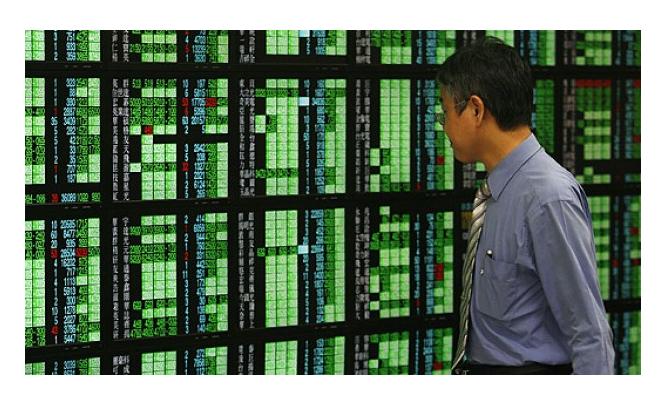Asia remarkable progress in building consensus on co-operation during the past two decades has occurred because nations have been realistic about what is achievable.
Europe’s sovereign debt and banking crisis threatens to tear apart the 17-nation eurozone. Meanwhile, Asia is accelerating co-operation and integration.
With Europe’s experiment on the verge of failure, is Asia heading in the wrong direction? Not at all. Asia’s push makes a lot of sense.
One example: the 10 members of the Association of Southeast Asian Nations aim to start an ASEAN Economic Community by 2015. Another is the 2012 Trilateral Investment Agreement between the People’s Republic of China, Japan, and the Republic of Korea – which together account for nearly 20 per cent of global GDP and trade at market exchange rates. Despite territorial disputes, the three economic gians agreed to start negotiating a three-way free trade agreement.
Then there is accelerating ASEAN+3 financial co-operation. The region’s emergency financial safety net, the Chiang Mai Initiative Multilateralizaton, doubled in size in May 2012, although it is not yet operational.
India – the other regional giant – is also expanding regional co-operation and has recently offered to lead in creating a regional financial safety net covering South Asia.
The differences between Asian co-operation and that of the European Union are stark. Integration in Asia has been largely market driven, outward oriented, and institution light. Conversely, the European project was conceived and driven by politicians, internally oriented, and institution heavy. Add the historical perspective: unlike post-war Europe, much of Asia was cementing newly acquired national sovereignity after centuries of colonialism.
On one hand, Europe needs to find a new balance: imposing austerity to cut fiscal deficits; providing support for economic growth; and ensuring policy consistency and predictability to restore confidence to jittery financial markets. To do that, Europe needs greater economic integration, not less. Common Eurobond issuance, greater co-ordination on economy policy, and political commitment to the euro may be the only way to avoid economic and financial collapse.
Asia, on the other hand, consists of a highly disparate set of economies in size, natural resources, human capital, and governance. Against this backdrop, its remarkable progress in building consensus on co-operation during the past two decades has occurred because nations have been realistic about what is achievable.
How does this affect relations in Canada?
Asia is leading growth in trade through increased openness. Intraregional and South-South trade is growing faster than trade with Europe and the United States. But there are some exceptions. One is Canada.
For example, from 2000 to 2011, the value of Canada’s exports to developing Asia rose six-fold: from $4.2 billion to $25.5 billion. And as a share of Canada’s total exports, it nearly quadrupled: from 1.5 per cent to 5.7 per cent. Much of the increase was in raw materials needed for manufacturing and infrastructure development.
The growth of Canada’s imports from developing Asia was just as dramatic: from $14.8 billion in 2000 to $68 billion in 2011, or from 6.1 per cent of Canada’s total imports to 14 per cent. So Asia’s trade integration remains as global as it is regional.
And it continues to offer a variety of opportunities for increased Canadian business and cooperation.
Canada is actively looking to expand trade and business in emerging markets – including developing Asia. This is the right move. There is much to be gained from deeper, broader economic relationships. With its now solid links and its strong existing Asian communities across the country, Canada now holds a natural and growing bond between Asia and North America.
Canada, by nature of its Asian constituency and natural resources, must participate in Asia’s ongoing economic transformation. It offers comparative advantage in several areas – particularly resources – and this includes finance.
The finance side
In Asia, financial integration has lagged trade integration. Asian investors prefer their home markets or mature markets such as Europe and the US. In 2010, only 24 per cent of the region’s cross border assets were held in Asian equities and seven per cent in the region’s debt securities. But as advanced economies restructure their fiscal balance sheets, Asia’s financial integration will likely increase as its financial markets develop to accommodate the region’s vast savings. These are needed within the region for corporate equipment and infrastructure investment, for example.
Although Asian markets are more closely connected to global markets (including Canada) than to each other, regional financial integration has accelerated since the 2008 financial crisis. Internationalizing the yuan will likely boost regional co-operation and integration, particularly in East and Southeast Asia.
Given the state of the global economy, Asia is at a crossroads. Increased trade and financial integration is welcome. But policymakers must understand the potential benefits and pitfalls of regionalism.
The effect of integration cannot be overemphasized. Closer ties have reduced income disparities in Asia, but they may also have contributed to widening inequality within countries as, for example, wokers in one sector may lose their jobs because of competition from neighbours.
Financial assets that can cross borders yield returns to a tiny share of the urban population. Indeed, income inequality has worsened in many Asian countries, which could cause political and social problems.
Regional co-operation is needed to manage risks without jeopardizing benefits. One risk is financial contagion during a crisis. Co-operation through a regional financial safety net helps. In ASEAN+3, the Chiang Mai Initiative Multilateralization is a start, though it has far to go before becoming truly effective.
As Asian integration strengthens, we must, unlike Europe, allow markets to drive progress, with governments and institutions co-operating to smooth the process and mange potential future risks.
And as Canada’s relations with Asia grows in both direction – from immigration and investment to providing raw materials, and as destination for Factory Asia’s products – there is much to gain from joining Asia’s continuing economic transformation
Source:This article was first published by the Asian Development Bank (www.adb.org)


